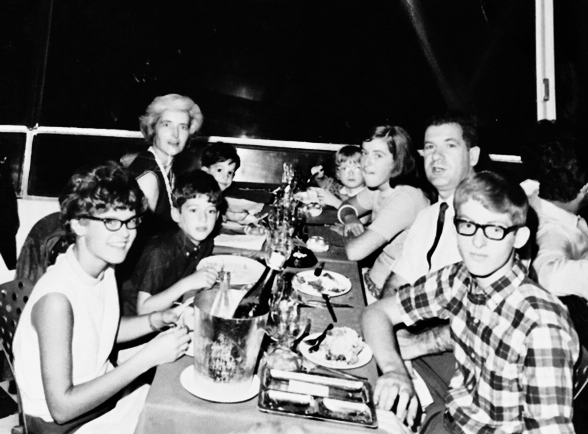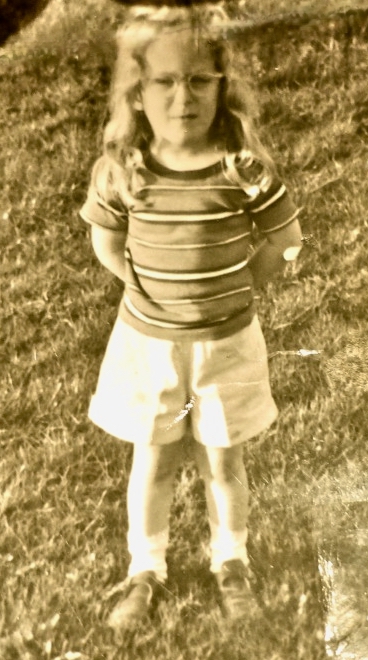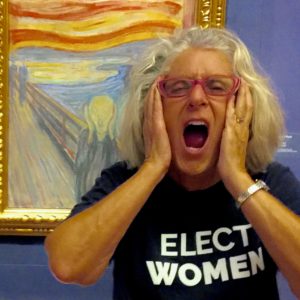Simone Patricia Joyaux: July 23, 1948—May 2, 2021

(September 23, 2021) By any measure, Simone Joyaux used her dash — the time between her date of birth and her date of death—well. During her dash, Joyaux’s (pronounced ZhaWHY-oh) blazed a trail across the nonprofit world, leaving an indelible mark on a sometimes-button-down fundraising profession. She died on May 2, 2021, a little over a year after being diagnosed with cerebral amyloid angiopathy, an illness with no cure or effective treatment.
In the seventy-two-year span of her dash, she touched and influenced thousands of lives. News of her passing triggered tributes from around the world. A site set up on CaringBridge.org counted more than 21,000 visits.
On seeing her for the first time, Simone Joyaux was hard to ignore and still harder to forget. A captivating figure, her sense of style – her clothing, bold jewelry, and signature eyeglass frames custom-made in her beloved France—constituted a chic flamboyance. But flair without substance is unremarkable, forgettable. Simone was neither of those things. She was a complex woman, committed and energetic, daring and doubtful.
The first and only time I experienced Simone in person was at AFP Congress in Toronto in 2013, which had the usual plethora of skills-building sessions on offer. But with 20-plus years into my fundraising career and at a transition into consulting, I was seeking out a different type of conference experience, something inspirational.
Simone’s session delivered.
Though small in stature, she commanded the room. There was no power point presentation cued, no standing at the lectern. She wound her way between the tables, moving among the attendees and, to let you know we were about to spend some time engaged in conversation, paused to make eye contact. The stage was hers.
Her ‘cage-rattling’ questions and comments clearly left some uncomfortable.
But, who was this white woman daring to speak about white privilege and the need to embed social justice in our work? And why had she been speaking about these topics since back in the ‘90s. What was the alchemy that shaped her perspective and framed her life’s work?

Born in 1948 to Georges and Jane Joyaux, Simone was the eldest of six siblings. Georges, who had been a math teacher in France, earned a scholarship to study in the US. While at Michigan State University, he met Simone’s mother Jane Peckham, then managing editor of the Centennial Review, an academic journal studying the Americas.
The Joyaux children had a secular and unconventional upbringing. Simone and her siblings were encouraged and challenged to voice their opinions, a radical notion in the 1950s and 60s, especially when it came to raising girls. The English proverb that ‘children should be seen and not heard’ did not apply to the Joyaux household.
Described as extroverts, Georges and Jane’s home regularly welcomed and entertained leading and diverse groups of international academics and artists, such as renowned mime artist, Marcel Marceau. They were deliberate about exposing their children to a wider world, intent on raising them to be socially aware and compassionate. The family traveled extensively discovering places, peoples and cultures across the US, Canada, and Europe.
The family’s mantra was “people eat, sleep and make love in languages other than English, in colours other than white and in pairings other than opposite sex.”
Whether it was within the walls of their home or through their travels, Simone’s early childhood was an incubator that fed curiosity, percolated critical thinking, and acknowledged, embraced, and celebrated diversity, and a joy for life.
She came of age during a tumultuous, watershed era in the United States.
The assassinations of John F. Kennedy in 1963, Malcolm X in 1965 and, in 1968, the Reverend Dr. Martin Luther King and Robert F. Kennedy were inflection points for her country. From the civil rights movement, demanding racial and social justice for Blacks, to the feminist movement that pushed for women’s rights, equality and freedom and encouraged women to run for political office, the demand and outcry for change was a relentless roar. Anti-war sentiments were growing. Simone’s first husband was a Vietnam war veteran.
When Simone entered the nonprofit space, she did so as an activist schooled in these political and social movements.
And while in the nonprofit sector, she assembled a comprehensive body of work. She became a teacher, mentor, and sponsor for those entering and navigating the sector and the fundraising profession, founded two organizations, including the Women’s Fund of Rhode Island, volunteered for several groups including CFRE International, AFP Rhode Island, and IFC Resource Alliance, and sat on many committees. She was a prolific writer, authored three books and hundreds of articles and blogs, was a staunch advocate for establishing fundraising standards and the compilation of a body of fundraising knowledge, a credentialed fundraiser, earning her CFRE in 1984 and ACFRE in 1994, and a much sought-after presenter and participated in hundreds of conferences.
The last 15 months of Simone’s life was excruciatingly difficult for her, however. In speaking with a few people who knew Simone intimately—Tom Ahern, her partner of 37 years, her younger sister Nicole and Nicole’s husband Larry, and Ashley Belanger, who describes Joyaux and Ahern as her fundraising parents—a vulnerable side of Simone was revealed. She felt uncertain. She questioned whether she had been good enough, doubted whether she had done enough.
Yet, her dash had a ripple effect.

Simone in front of Edvard Munch’s painting, The Scream, at the National Gallery, Oslo, Norway, 2018
Simone’s life touched thousands of others and its effect will be felt into the future by those who will not necessarily ascribe what they know to Simone. Since her passing, several funds and awards are planning to be established in her name.
If one subscribes to the belief that early influences play a significant role in shaping our lives, then the events of Simone’s life, from child to adulthood, shaped the person she was.
Heavily influenced by the issues of her day, Simone’s advocacy and activism reflected them. While the fight for many of the issues she cared about continues, others have emerged.
Today’s issues, an extension of what Simone fought for, include the call for racial justice in the nonprofit sector, disability rights, LGBTQ2S+ rights, the fight against the prevalence of sexual assault and misconduct in the sector, the persistent gender wage gap and, most intransigently, the growing power imbalances between donors and the communities closest to the issues they seek to support.
The conversations are uncomfortable, and the change is disruptive. Simone’s dash has now ended, but efforts to rattle and dismantle the cages continue. She represented a model of how to dedicate one’s life to effecting social change.
Nicole Salmon is the founder of Boundless Philanthropy and an editor of Collecting Collecting: Joy, Pain, Freedom, Love.